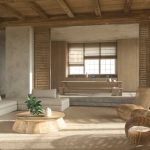Are you looking to add a personal touch to your home decor? Learn how to make decorative cushions at home and enhance the look of your living space with unique and stylish designs.
Homemade decorative cushions not only offer a personal touch but also provide endless possibilities for creativity, making them the perfect addition to any home decor. From choosing the right fabric to adding decorative elements, this article provides a comprehensive guide on making your own decorative cushions that will reflect your personal style and elevate the ambiance of your living space.
Making homemade decorative cushions is an enjoyable and rewarding DIY project that allows you to customize every aspect of the design to perfectly complement your home decor. By using high-quality materials and following simple sewing techniques, you can create professional-looking decorative cushions that will instantly upgrade the look of any room in your home.
In this article, we will explore the materials needed, provide tips for selecting the right fabric, offer design inspiration, and guide you through cutting, measuring, sewing techniques, adding decorative elements, and taking care of your homemade decorative cushions. Whether you are a beginner or an experienced crafter, making decorative cushions at home is a fun and fulfilling way to express your individuality while creating beautiful additions to your home decor. Let’s get started on this creative journey.
Materials Needed
When it comes to making decorative cushions at home, having the right materials is essential to ensure a successful and professional-looking result. Here is a detailed list of all the materials needed to make decorative cushions at home:
Fabric
The first and most important material you will need for making decorative cushions is fabric. Choose a fabric that suits your personal style and complements your home decor. Consider factors such as texture, color, durability, and washability when selecting the fabric for your cushions.
Stuffing
Another essential material for making decorative cushions is stuffing. Whether you prefer polyester fiberfill or down feathers, make sure to choose a stuffing material that provides the desired level of firmness and comfort for your cushions.
Sewing Supplies
You will also need basic sewing supplies such as needles, thread, scissors, pins, and a sewing machine (optional). Having these supplies on hand will make it easier to accurately measure, cut, and sew the fabric for your decorative cushions.
Decorative Elements
Finally, consider adding decorative elements such as buttons, ribbons, or embroidery to personalize your homemade decorative cushions. These extra touches can add personality and uniqueness to your cushion designs.
By ensuring that you have all the necessary materials beforehand, you can embark on creating beautiful homemade decorative cushions that will enhance the aesthetic appeal of any room in your home.
Choosing the Right Fabric
When it comes to making decorative cushions at home, one of the most important decisions you’ll make is choosing the right fabric. The fabric you choose will not only affect the overall look and feel of your cushions but also determine their durability and ease of maintenance. Here are some tips for selecting the perfect fabric for your decorative cushions, including considerations for texture, color, and durability.
Consider Texture
The texture of the fabric plays a significant role in the overall aesthetic of your decorative cushions. For a cozy and inviting feel, consider using soft, tactile fabrics such as velvet, chenille, or faux fur. In contrast, if you prefer a more sleek and modern look, opt for smooth and crisp fabrics like cotton or linen. Keep in mind that the texture of the fabric should complement the rest of your home decor to create a cohesive look.
Choose Color Wisely
The color of your fabric will have a major impact on the visual appeal of your decorative cushions. When selecting a color scheme, consider the existing colors in your space and aim to complement or contrast them with your cushion covers.
Bold and vibrant hues can add a pop of color to neutral interiors, while subtle pastel tones can create a calming atmosphere. Additionally, consider how light affects the color of your chosen fabric as lighting conditions can alter its appearance.
Prioritize Durability
Since decorative cushions are often used for lounging or napping, it’s crucial to prioritize durability when selecting fabric. Look for fabrics that are easy to clean and maintain, especially if you have children or pets at home.
Fabrics with high rub counts (indicating their ability to withstand friction) like denim or canvas are great choices for high-traffic areas. Consider using outdoor fabrics for decorative cushions in busy living spaces as they are often stain-resistant and easy to clean.
By carefully considering these tips for choosing fabric based on texture, color, and durability, you can ensure that your homemade decorative cushions not only reflect your personal style but also stand the test of time in your home decor.
Design Inspiration
When it comes to making decorative cushions at home, there are endless possibilities for creativity. Whether you prefer a more traditional look or want to experiment with unique and trendy designs, decorative cushions offer a fantastic opportunity to showcase your personal style. Some popular trends in decorative cushion designs include geometric patterns, botanical prints, and textured fabrics. These can add visual interest and a modern touch to any living space.
If you’re looking for unique patterns and design inspiration for your homemade decorative cushions, consider incorporating elements from nature, such as floral motifs or animal prints. You can also experiment with different shapes, such as round or bolster cushions, to add variety to your home decor. Additionally, mixing and matching contrasting fabrics and colors can create a visually stunning effect that will make your decorative cushions stand out.
Incorporating embroidery or applique techniques into your cushion designs is another way to add a personalized touch. Whether you choose to embroider intricate patterns onto the fabric or apply decorative patches, these techniques can elevate the look of your homemade cushions. For those who enjoy a more minimalist aesthetic, consider opting for solid-colored fabric with subtle embellishments like piping or fringed edges for a sophisticated finish.
Overall, the key to finding design inspiration for homemade decorative cushions is to think outside the box and let your creativity shine. With the right materials and some creative flair, you can transform simple fabric into eye-catching home decor pieces that reflect your unique style.
| Decorative Cushion Design | Inspiration Idea |
|---|---|
| Geometric Patterns | Experiment with bold colors and shapes for a modern look |
| Botanical Prints | Incorporate floral motifs or leafy patterns for a natural feel |
| Textured Fabrics | Add dimension with fabrics like velvet or faux fur for a luxurious touch |
Cutting and Measuring
When it comes to making homemade decorative cushions, one of the crucial steps is accurately measuring and cutting the fabric to the desired size. This ensures that your cushions are uniform in shape and size, giving them a professional and polished look. Here is a step-by-step guide on how to measure and cut fabric for your decorative cushions at home.
First, you will need to measure the dimensions of the cushion you want to create. Using a measuring tape, determine the length, width, and height of your cushion. Make sure to add an extra half inch to each measurement to account for seam allowance.
Once you have your measurements, transfer them onto your chosen fabric using fabric chalk or a washable fabric marker. Use a ruler or straight edge to ensure straight lines and accurate dimensions. It’s important to measure twice and cut once to prevent any mistakes.
After marking the cutting lines on the fabric, carefully cut along these lines using sharp scissors. Take your time with this step to ensure clean and precise cuts. Be mindful of the grain of the fabric if it has a particular pattern or texture.
Ensuring accurate measurements and precise cuts is essential in creating beautifully crafted decorative cushions that will enhance any home decor. Following these step-by-step instructions will guarantee that you achieve professional-looking results when making decorative cushions at home.
| Step | Instructions |
|---|---|
| 1 | Determine cushion dimensions (length, width, height) |
| 2 | Transfer measurements onto fabric with additional half inch for seam allowance |
| 3 | Carefully cut fabric along marked lines using sharp scissors |
Sewing Techniques
Creating decorative cushions at home can be a fun and rewarding DIY project. Once you have selected the perfect fabric and design inspiration, it is time to focus on sewing techniques to bring your decorative cushions to life. Whether you are an experienced sewer or a novice, there are basic sewing techniques that can help you achieve professional-looking results.
First, it is important to ensure that you have the right equipment, such as a sewing machine, needles, thread, pins, and scissors. Additionally, having a good understanding of different stitches, such as straight stitch, backstitch, and whipstitch, will be crucial in creating durable and well-finished decorative cushions. By mastering these basic sewing techniques, you can confidently move forward with your project.
Once you have cut your fabric to the desired size based on accurate measurements and chosen a suitable stitch for your design, it is time to sew the fabric pieces together. Remember to leave an opening for stuffing before closing the cushion cover completely.
This will allow you to neatly stuff the cushion with filling material before closing the seam with an invisible stitch for a polished finish. By mastering these basic sewing techniques and tips for creating professional-looking decorative cushions, you can elevate your home decor with personalized and stylish accents.
Adding Decorative Elements
Once you have completed the basic construction of your decorative cushions, it’s time to add the finishing touches that will truly personalize and embellish your creation. There are countless ways to add decorative elements to your cushions, from simple details like buttons and bows to more intricate designs like embroidery or appliqué. Here are some creative ideas for adding a touch of personality to your homemade decorative cushions:
1. Buttons: Sewing buttons onto your cushions can add a charming and whimsical touch. You can use mismatched vintage buttons for a shabby-chic look, or choose coordinating buttons in various sizes for a more polished appearance. Consider arranging the buttons in interesting patterns or using them as functional accents for closures.
2. Embroidery: Adding embroidery to your cushions is a wonderful way to showcase your creativity and create one-of-a-kind designs. Whether you choose to embroider a simple monogram, a delicate floral motif, or an intricate pattern, embroidery adds a beautiful handmade quality to your cushions.
3. Decorative trim: Consider adding decorative trims such as lace, pom-poms, or tassels around the edges of your cushions for an extra flair. These trims come in many different styles and colors, allowing you to customize the look of your cushion to match your home decor.
By following these suggestions on how to make decorative cushions at home special with unique elements like buttons, embroidery, or decorative trim, you can elevate the look of any room and add an extra level of personality and charm through DIY decor projects.
Care and Maintenance
Taking care of your homemade decorative cushions is essential to ensure their longevity and keep them looking fresh and stylish in your home decor. Here are some tips for maintaining your cushions:
- Regular cleaning: It’s important to regularly clean your decorative cushions to remove dirt, dust, and any spills. You can spot clean with a gentle detergent or machine wash the cushion covers if they are removable.
- Proper storage: When not in use, store your decorative cushions in a cool, dry place to prevent moisture build-up and potential mold growth. You can also use vacuum-sealed bags to save space and protect the cushions from dust.
- Fluffing and reshaping: To maintain the shape and fullness of your decorative cushions, make sure to fluff them regularly. This will help redistribute the filling and prevent it from becoming lumpy or uneven.
By following these simple care and maintenance tips, you can ensure that your homemade decorative cushions will continue to enhance your home decor for years to come.
Implementing Design Ideas
When making homemade decorative cushions, there are various design ideas that you can implement to add charm and personality to your home decor. Here are some creative inspirations for different decorative cushion designs:
- Color coordination: Choose colors that complement the existing color scheme in your home. You can opt for contrasting colors for a bold statement or stick to complementary tones for a harmonious look.
- Pattern mixing: Experiment with different patterns such as stripes, chevron, polka dots, or florals. Mixing patterns adds visual interest and makes your decorative cushions stand out.
- Texture play: Incorporate textured fabrics like velvet, faux fur, or knits to add depth and dimension to your cushions. Mixing textures creates a cozy and inviting atmosphere in any room.
With these design ideas as inspiration, you can create unique and eye-catching decorative cushions that reflect your personal style and elevate the ambiance of your living space.
Conclusion
In conclusion, making decorative cushions at home offers numerous benefits and provides a great deal of satisfaction. Not only does it allow for personalization and customization to fit any home decor style, but it also allows for creativity to run wild.
By being able to select the fabric, design, and decorative elements, you can truly make your decorative cushions a unique reflection of your individual style and taste. Additionally, creating these cushions at home can be a cost-effective alternative to buying them from stores, while also providing a sense of accomplishment and pride in your DIY project.
The possibilities for creativity are truly endless when it comes to making decorative cushions at home. With the freedom to choose from an array of fabrics, patterns, and embellishments, you can unleash your artistic side and create cushions that are one-of-a-kind.
Whether you prefer classic and elegant designs or bold and whimsical patterns, there is no limit to what you can achieve when making decorative cushions at home. The ability to experiment with different sewing techniques and decorative elements allows for an enjoyable experience that can result in beautifully crafted pieces that add a personal touch to any living space.
Furthermore, taking care of homemade decorative cushions is just as important as making them. By following proper care and maintenance tips, these cushions can retain their freshness and longevity in home decor.
Regularly washing and fluffing the stuffing or changing out decorative elements where necessary will ensure that your handmade cushions continue to enhance the aesthetic appeal of your living spaces for years to come. In essence, the process of making decorative cushions at home fosters not only creativity but also a sense of ownership over your household decor that brings lasting satisfaction.
Frequently Asked Questions
What Is the Difference Between an Accent Cushions and a Decorative Pillow?
The main difference between an accent cushion and a decorative pillow lies in their purpose. Accent cushions are primarily used for comfort, while decorative pillows are intended to add aesthetic appeal to a space.
How Many Pillows Can You Make With 1 Yard of Fabric?
With 1 yard of fabric, you can typically make around 2-3 standard size pillows, depending on the dimensions and pattern of the fabric. This allows for enough fabric to cover both sides of the pillow.
Can You Make Cushions Without Sewing?
Yes, it is possible to make cushions without sewing by using techniques such as fabric glue, fusible bonding tape, or a no-sew adhesive hem. These methods can be used to create simple and quick cushions without the need for sewing skills or equipment.

I’m thrilled to be your companion on this exciting journey through the world of home decor and design. With a passion for turning houses into homes and a keen eye for the finer details, I’m here to help you transform your living spaces into beautiful, functional, and meaningful havens.





